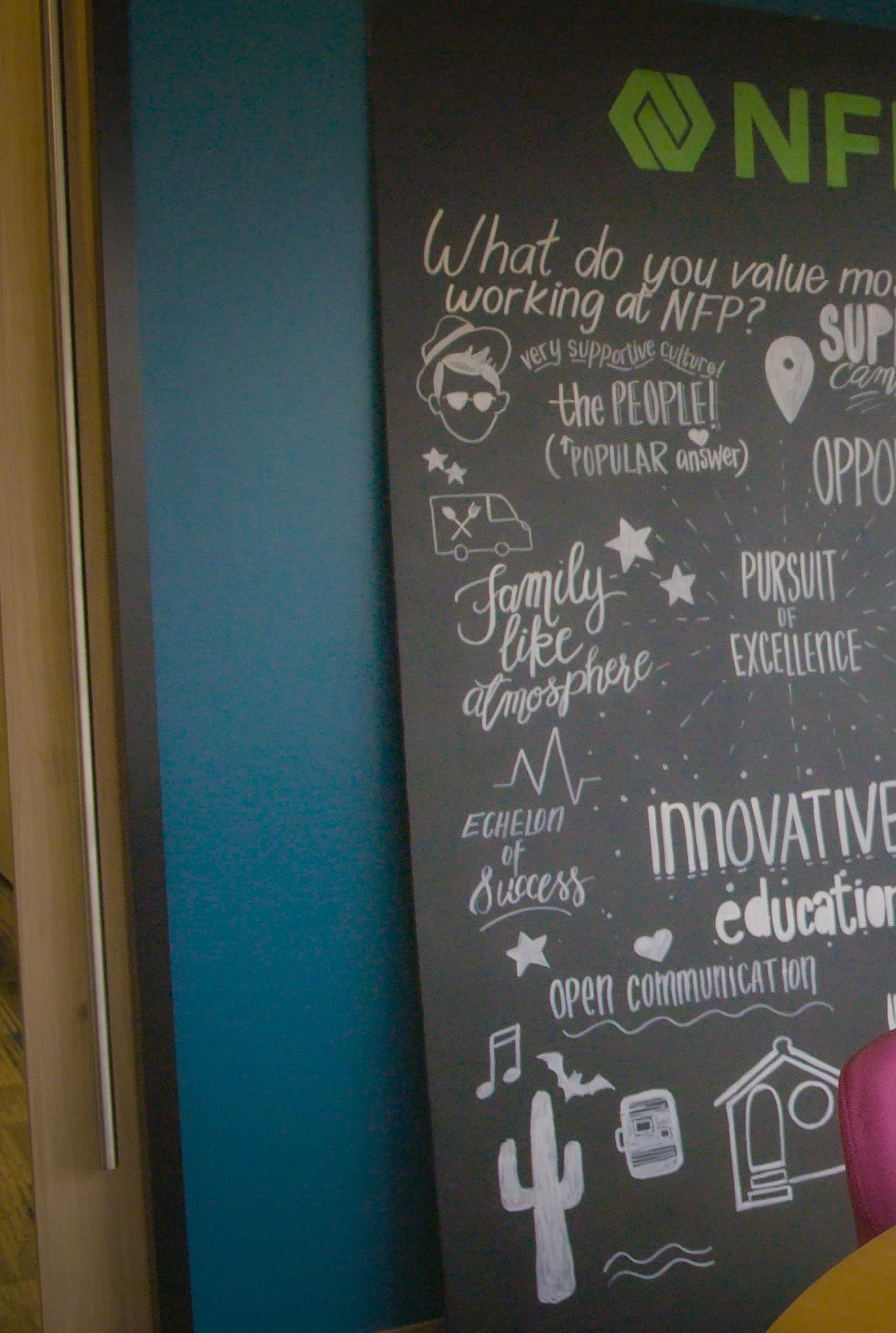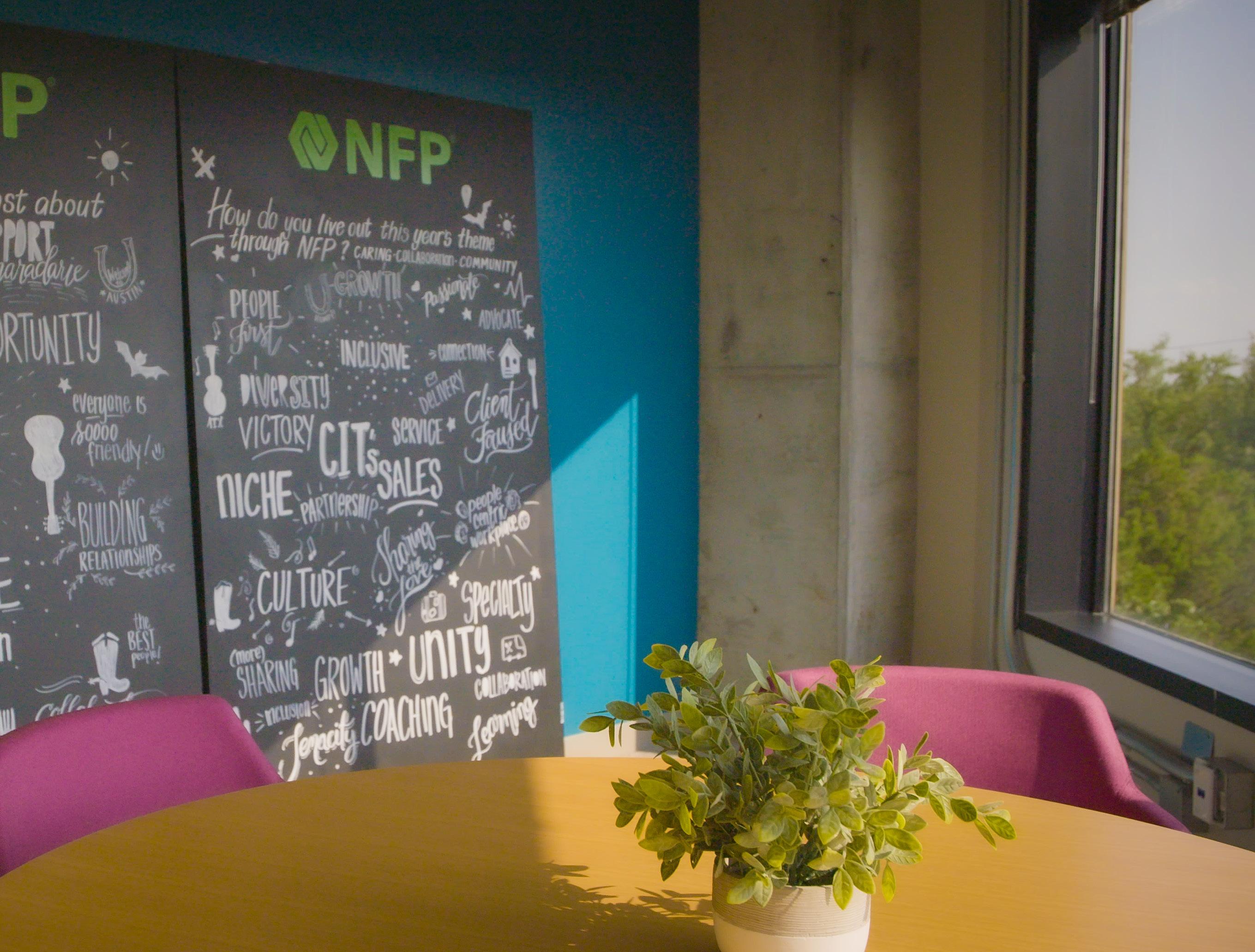










presentations, Q&A sessions to 1-2-1 networking, the 2-day hybrid show is an essential deep dive into issues impacting the future of each industry today.

Global giants and innovative startups will all find the perfect platform with direct access to an engaged and active audience. You can’t afford to miss this opportunity.
See you on:




The year 2021 was a boom-time for insurtechs. This 12-month period was filled with large investment rounds that saw traditional insurers partner with innovative startups, while a wide spectrum of dynamic market offerings hit the headlines.
Then came 2022 - and the war in Ukraine - which saw inflation spiral and companies lose large percentages off their valuations. Insurtech companies suffered greatly in the first two quarters of the year. In reaction, investors drew tight the purse strings and watched the world stage with interest.

Meanwhile, market-leading insurtechs experienced a direction change. Their heady growth plans scuppered, many also shed new staff and put their latest projects on hold. There was a ‘batten down the hatches’ feel to that whole period.
But, as Q4 draws to a close, the turbulence and uncertainty is abating. Investors are finding their sea legs, and once again recognising that innovation and good business modelling will always be a sound investment.
Our selection of features this month focus on what is possible - and where insurtechs are heading. And, the horizon is bright and positive for this shiny, new sector in insurance.
The evenings might be drawing in, but insurtech is still reaching for those bright heights
Let us know your thoughts - and stay positive!

“There was a ‘batten down the hatches’ feel to that whole period”









Connected Insurance’s Tal Cohen and Yaron Zurr reveal how CI is revolutionising UBI solutions in the sharing economy

Connected Insurance (CI) created a datadriven risk platform that powers the next generation UBIs, driving the space forward.
Tal Cohen, co-founder and CEO of CI explains, “The sharing economy is a relatively new industry with limited exposure history. Traditional insurers are using traditional risk models that they use for similar products. This results in low accuracy pricing, which is based on few risk factors and a black box that customers can’t understand or control. By differentiation, CI breaks the insurance paradigm.”
“Our technology employs pricing models with much higher granularity, factoring many more data points currently ignored standard pricing models. We provide our clients transparency on their insurance costs and empower them to control and reduce costs by making educated decisions,” he says.
Extending their services into the marketplace has been achieved by a collaboration with some of the world’s leading insurance players. Yaron Zurr, co-founder and CCO of CI, says “We believe that insurance players
should become contributors and enablers to the businesses they serve. We provide a solution that empowers our partners to make a better insurance offering to their client, as well as solution for the digital platforms to manage their self-insurance and enable them to offer even more relevant protections to their end clients.”
Technology-driven innovation and CI CI’s full-stack solution connects and serves all parties: sharing economy platforms, brokers, claim administrators, and reinsurers. Connecting everyone under the same platform, says Cohen, creates transparency, leads to better insurance pricing, and ultimately allows sharing economy companies to reduce their total exposure costs.
Cohen adds, “CI provides digital platforms with essential tools such as: Risk & utilization dashboards to help the platforms manage their insurance costs and control their risk; Connected Claims module integrated into the digital; tools to manage the self-insurance part better than most advanced carriers; and tools for rapid creation of embedded insurance.”
The result is a seamless delivery of services and a satisfactory customer journey, concludes Zurr, who adds, “CI can optimise the customer’s insurance pricing by focusing on the lower risk usage and avoid the riskier transactions.”
Learn more
Clear skies above the New Zealand parliament building in Wellington . The government has proposed an income insurance scheme, which would cover 80% of a person’s income if they lose their job through redundancy. The scheme would be funded by levies paid through employer and employee contributions, similar to an existing accident compensation scheme called ACC. Some prominent businesses have warned the proposals would subsidise industries with higher staff turnover, but trade unions say it would reduce pressure for unemployed people to accept lower-paying roles. A decision on the proposal is expected in due course.

ARDELIUS
Leading Indian insurtech Digit Insurance has gone ahead and filed for its IPO, despite the current financial climate prompting other insurtechs to defer the process. According to reports, Digit Insurance is seeking to raise an estimated US$440mn from a potential public listing. The company recently received a valuation of US$3.5bn following a funding round in 2021, which was led by Sequoia Capital, A91 Partners, Faering Capital, and Fairfax. The company, which was founded in 2017 by former KPMG executive Kamesh Goyal, has gone from strength to strength since.
It will want to avoid the fate of India's biggest public offering – that of the state-owned Life Insurance Corp – which dropped almost 8% on its debut back in August after it raised US$2.7bn. The margin was far below the company’s plans to raise US$12bn. Furthermore, the Indian fintech Paytm also dropped significantly after its US$2bn IPO last year.

YOU LOOK AT THE APPLICATIONS WHERE IOT DEVICES ARE BECOMING WIDELY USED, THERE ARE SERIOUS IMPLICATIONS”
MCGRATH
Lead Penetration
THE OPPORTUNITIES IN FRONT OF THE INDUSTRY, INSURANCE’S ADOPTION OF ML AND DL HAS BEEN FAIRLY SLOW”
and Co-Founder, Hedvig
FILING FOR IPO “CONSUMERS UNDERSTAND THE VALUE OF THEIR DATA AND BELIEVE ITS PRIVACY SHOULD BE PROTECTED, BUT THIS DOESN’T MEAN THEY’RE UNWILLING TO SHARE THEIR INFORMATION”
JOE DIAMOND VP of Product Strategy EMEA, Okta



PET INSURANCE PROTECTS OWNERS AGAINST THE COST OF MEDICAL BILLS AND UNEXPECTED EXPENSES, BUT IT HAS COME A LONG WAY IN THE LAST 130 YEARS. IN FACT, IT WASN’T INTENDED TO COVER OUR DOMESTIC COMPANIONS AT ALL…
The first policy covering animals was offered in Sweden, which can legitimately lay claim to inventing pet insurance. It was created by Claes Virgin for the insurance company Länsförsäkrings Alliance and was more akin to farm insurance, covering working animals such as horses and livestock.





Dogs are often described as man’s best friend, so it’s understandable that our canine companions were the only domestic pet covered by early policies. The first pet insurance policy for a dog was launched in Sweden in the 1920s, and pet insurance soon spread across the Nordic nation.
The second country to embrace pet insurance was Britain, where the first pet insurance policy was offered shortly after the Second World War. According to FEDIAF, the body representing European pet food manufacturers, there were over 36 million pets in the UK in 2021.
During 2021 and 2022, the owner of Krispy Kreme and Panera Bread made a sizeable play into pet insurance by acquiring brands like Figo, Agila and Crumb & Forster. With a cost-of-living crisis looming in many countries, investing in a policy now could save pet owners from unexpected bills.
Pet insurance reached the US in the 1980s with the first policy – issued by Veterinary Pet Insurance – given to television star Lassie. Canada followed in 1989 and some 25 years later, PetSecure, the country’s oldest pet insurer, issued its millionth policy to a corgi named Zoe.






New technology led to a number of digital pet insurance offerings. Figo Pet Insurance launched in 2015, followed by ManyPets in 2017, Swedish pet insurtech Lassie in 2020, and Italian startup Dalma in 2021. This year, big-name insurers like Admiral and Revolut have got in on the pet insurance game.



By his own admission, the boss of Clearcover was an absentee student and the world's worst attorney. But sometimes, one career change is enough to spark a billion-dollar idea
Kyle Nakatsuji is the CEO of auto insurtech Clearcover, which uses technology to improve the experience of making an auto claim. Since co-founding the company with insurance industry veteran Derek Brigham in 2016, Nakatsuji has led the Chicago-based firm to a valuation north of US$1bn.
Clearcover places long-term customer centricity at the heart of everything it does. For the customer, that means some of the quickest claims decisioning in the auto insurance industry. Using its smartphone app, Clearcover customers can take a few photos of the damage to their vehicle while they’re still at the scene. Clearcover’s technology automatically assesses the damage before settling claims – sometimes in a matter of minutes. In fact, Clearcover claims that its record payout time was just seven minutes. This entire experience, augmented by time-saving tech, is geared
I just started showing up to Derek’s meetings. I only realised around a year ago that I never asked Derek for permission”
towards saving customers money on their car insurance. This obsession with pricing can result in 20-40% savings compared to other providers, which works out to between US$1,000 and US$1,500 a year per policy.
A law school misfit Nakatsuji was born in Milwaukee, Wisconsin and raised in the Midwest. After studying for an undergraduate degree in political science, he obtained a law degree and an MBA from the University of Wisconsin-Madison. But Nakatsuji admits that he was an absentee student; he preferred to spend time on the football field or out in the community gaining hands-on experience with startups than in the lecture hall.
The plan wasn’t always to study for an MBA. He went to law school not knowing what it took to be an attorney, and a few weeks into the course he suspected he may have made a mistake. Nakatsuji relentlessly asked the business school across the road from the university’s law school to let him study for an MBA at the same time – and eventually they relented.
Insurance – where he spent four years investing in insurtech startups.
After graduating, Nakatsuji originally worked as a corporate attorney, which only confirmed his earlier suspicions that he didn’t have an affinity for law. “I was the worst attorney,” Nakatsuji recalls. He turned to the world of venture capital instead, co-founding American Family Ventures –the direct investing arm of American Family
Eventually, the same calling that prompted him to skip class – that feverish curiosity for tech startups and entrepreneurialism – caused him to make his next move. Clearcover began in 2016 when Nakatsuji imposed himself upon his co-founder, who was working
on an interesting side-project on behalf of American Family Ventures. “I heard that Derek was working on a project that they were calling insurance as a service,” Nakatsuji told the Let’s Grab Coffee podcast in 2021. “It was basically an idea around our initial thesis on distribution, which is that you can integrate insurance into some other product or experience and it will be more convenient for the customer and cheaper to distribute.
“I went to my boss and asked if I could spend 20% of my time hanging out with Derek and his crew, and seeing what they’re up to, because we were investing a lot along those lines. I just started showing up to Derek’s meetings. I only realised around a year ago that I never asked Derek for permission – I just started going to his meetings!”
The pair worked on the idea for a few weeks before recognising that they needed to create a new company. After some initial scepticism from seasoned investors at American Family Ventures, they eventually persuaded the firm to back their new startup. It was the first vote of confidence in a company which, under Nakatsuji’s leadership, has smashed through four separate funding rounds and raised more than US$300mn in backing along the way.
The most recent, a US$200mn Series D raise in April 2021, left Clearcover with a valuation of US$1bn. For his part, Nakatsuji has been named a Top CEO by Comparably and featured in publications like Forbes and WSJ. In his free time, he enjoys playing golf and spending time with his wife, daughter, and dog Otis.

As Senior Manager of Claims at LexisNexis Risk Solutions, Insurance, UK and Ireland, Kajal Vakas believes better data management will transform the insurtech space.

» I think it has to be Superman – because he could do everything! From flying to carrying heavy objects, to supersonic sound and sight. He was an all-rounder. I think that’s always resonated with me, especially as a working mother; we have to be able to ‘do it all’, too.
» My background is in operational claims handling, so when I first started working in technology and data I had very limited hands-on experience. My career counsellor at that time gave me two pieces of invaluable advice: the first was to understand my own strengths and weaknesses; the second was to work with others who are strong where I’m weak and weak where I’m strong. This allows us to bounce off each other and build our skill-sets collaboratively. So I made it my mission to spend time with technologists and data analysts, learning necessary skills from this new perspective. In turn, I lent my operational experience to them, helping them understand claims operations.
» The last book I read was ‘I Am My Brand’ by Kubi Springer at the start of the year. I love reading but do find it difficult to find time and have recently turned to podcasts, which I can listen to whilst multitasking. The podcasts I’ve been listening to recently include the Insurtech Insider podcast by 11:FS, InsTech with Matthew Grant and, of course, Steven Bartlett’s Diary of a CEO.
» At the moment it’s Netflix and my Apple watch. They both just make things easy and convenient, while offering a very personalised experience. I love how, despite using the exact same technology as my closest family members, my Netflix account or my Apple watch set up are so personal to me. So much so, that I feel lost and disconcerted when I scroll through my husband’s Netflix account or even pick up his watch. It almost feels like I’ve stepped into my neighbour’s house – it’s kind of the same but so different!
» Preetham Peddanagari, Head of Technology Consulting at EY. Working with Preetham helped me build my confidence exponentially due to his trust in me and giving me opportunities to continuously build my career.
I’ve looked up to many people as mentors throughout my career. Starting from Brandon Nuttall, Partner in Insurance Technology at EY, who never gave me the answer but enabled me to think critically. John Miles, Head of Motor Claims at esure, whose calm approach (even at times of crisis) was a comfort and provided me much needed guidance to navigate through challenging situations.
More recently, Martyn Mathews, Senior Director of Commercial and Personal Lines at LexisNexis Risk Solutions, who’s an invaluable sounding board and always willing to talk through any ideas I propose, even the wackiest!
» One of the biggest challenges I’ve encountered is bridging the gap between business and technology. From my experience, technologists lack business knowledge and business professionals lack technology knowledge. This can lead to solutions that don’t fully address the problem faced by the business or lack of funding/engagement from business leaders in leveraging technology solutions, ultimately creating misconceptions on both ends.
However, there is a huge advantage and benefit for claims businesses to leverage data and technology to improve outcomes for both themselves and their customers.
Claims fraud continues to be a very real problem for the insurance industry. As First Notification of Loss (FNOL) becomes more streamlined and automated to ease the burden on the customer and reduce claims handling time, insurance providers need to ensure the door to fraudsters is not left ajar.
Seamless data integration at FNOL can help tackle this problem, filling in important gaps in knowledge for the claims handler while helping to expedite genuine claims. For example, FNOL-focused data enrichment could be on the person to confirm their identity, past claims history, their policy history including cancellations or gaps in cover. It could also build a more detailed picture of the asset such as the home or the vehicle.
Another macroeconomic challenge currently affecting the insurance sector is the ongoing supply chain issues in the motor industry, which mean that insurers face continual challenges sourcing replacement vehicles. We need to think holistically about solving this issue. Rather than the traditional courtesy car, the industry needs to look more broadly at the question ‘how do I support my customer’s mobility?’. It starts with fully understanding the needs and preferences of the customer and their location using data, to then offer appropriate options.
» Enthusiastic. Energetic. Optimistic.

» We are working with our customers and with industry partners to develop specific solutions to support the claims function.
Perhaps one of the most useful pieces of data to claims professionals is granular data on past claims for the customer and/or their asset, gathered from across the market. So we are launching a contributory claims database, first in home, followed by motor and commercial. This data won’t just benefit claims, of course; it can support pricing accuracy and help to ensure the customer is offered the right product for their needs. LexisNexis Risk Solutions has proven experience in delivering insights from industry contributed data – from policy history to quote history – so it’s exciting to be part of the next stage of this journey. The insurance industry has been crying out for granular claims data so we already have a number of insurance providers eager to get on board with this initiative.
As a business, we are also helping insurance providers gain a 360° -view of their customers based on all the data they currently hold. This can be challenging when you consider the merger and acquisition activity in the market and factor for name changes, address changes and so on. However, linking and matching technology can provide a solution. With a single customer view you can get a much better understanding of the customer and their needs, from quote through to claim and, most importantly, verify the claimant is who they say they are.
As the insurance sector’s data, analytics and technology provider, we’re perfectly positioned to make that possible.
» I’m inspired by simple ideas that address a challenge in the industry and make things better.
I have been lucky to be part of claims transformation projects and have seen how technology can speed the claims process for both the customer and the insurance provider. For example, an app based solution to capture images of vehicle damage or accidental damage in the home, or the use of connected devices such as escape of water detectors capturing real-time data to help minimise losses and expedite claims. Technology is a great enabler, but this should never be at the expense of human empathy and expertise – the best insurtech solutions strike the right balance between both.
Stop ransomware in its tracks.

Boost security performance with Akamai Guardicore Segmentation.
Learn more

Steve Winterfeld of Akamai discusses the company’s university-based founding and how it merged into a leading multibillion-dollar cybersecurity firm
Akamai was founded following a competition at the Massachusetts Institute of Technology (MIT), entered by its co-Founder and CEO Frank Thomson Leighton—Dr Tom Leighton. Since that time, the organisation has expanded massively, and in the words of Steve Winterfeld , Advisory CISO at Akamai, the company “continues to solve hard problems.”
The cybersecurity company plays a critical role for corporations as it focuses on the future, to determine whether threat motivation will change and how to best combat ransomware attacks, state-sponsored DDoS attacks, and ransomware that could turn into wiperware.
“Those are real concerns, and we’re keeping an eye out for those. And so we have probably 15 security capabilities backed up by services, responding to customers’ needs and rapidly growing on the edge compute and cloud side.”
“We started out with a web application, or as it is more commonly called now, web application and API protection, and expanded into protecting the infrastructure against DDoS to include the DNS infrastructure and recently added internal infrastructure protection and visibility through micro-segmentation,” explains Winterfeld.
As an established cybersecurity organisation, Akamai can now focus on what customers need.

Winterfeld explains that, in response to its clients’ feedback, the company has been acquiring the necessary assets and tools to fulfil those needs with the recent purchase of Guardicore. Guardicore’s leading microsegmentation products will be added to Akamai’s comprehensive portfolio of Zero Trust solutions to protect enterprises from damage caused by breaches like ransomware, while safeguarding the critical assets at the core of the network.
“We bought Linode, which is a cloud provider. And so now we have an integrated platform to build and perform on as well as secure.”
A prime example of Akamai’s ability to meet customer demands, particularly in high-risk environments, is its partnership with First Bank, which is “very concerned about its real-time visibility into its network. We’re partnering with them on a software-based microsegmentation, where they’re able to see those data flows and create segments.”
 WRITTEN BY: JOHN O'HANLON
PRODUCED BY: JAKE MEGEARY
WRITTEN BY: JOHN O'HANLON
PRODUCED BY: JAKE MEGEARY


It's not easy to define NFP. Though it stands as one of the biggest insurance brokers in the USA and globally, it's more than just a broker. NFP is an integrated financial solutions company at its heart – focused on benefits that enable employers to win the talent war, wealth and retirement that enhance financial security, and P&C that mitigates risk. And now, due in part to the seismic technological and marketplace changes, NFP is also a user experiencefocused organisation.
NFP’s growth strategy has always focused on acquisitions and partnerships with companies that can complement its vision. But now, partnerships include innovative, digital technologies that enhance the integration and collaboration in a more personalised way.
Mark Rieder has been with NFP since 2002, spending the last four as Head of Innovation. “We launched our innovation efforts in 2018 with a focus on the InsurTech, FinTech and HRtech space, assessing how it was going to influence the way we would do business moving forward.
“Four years later, armed with what we learned, my focus has shifted to helping drive the organisation down a digital transformation path, launching our strategy, and encouraging the whole organisation to rethink the way we do business.”
Mark Rieder , Head of Innovation at one of the top property and casualty brokers NFP, explains its game-changing NFP Connect 'system of engagement'
“ We truly believe that, in order to effect change, we must foster an ecosystem of collaboration”
MARK RIEDER HEAD OF INNOVATION, NFP

The insurance industry has been a laggard when it comes to technology adoption, he adds, even though there have been plenty of examples in other sectors of how digital transformation can change a whole industry for the better.

But without buy-in, change can't happen. “My role is to challenge what we're doing and ask, ‘What if we did this? Would we have a different outcome?’. Unless you're pushed, you sometimes sit back and become too comfortable, so I’m the person who makes things uncomfortable, I guess,” Rieder says with a smile. “The biggest problem people or organisations have when they try to digitally transform is they focus too much on the technology. Innovation and digital transformation are actually much more about people than technology.”

“ I think innovation and digital transformation are more about people than technology”
NFP Connect: a system of engagement That said, there is a need for infrastructure to help execute the change strategy. Rieder, along with Jayaprakash Subramaniam ‘JP’ and the entire NFP Development team, has partnered to drive the development and subsequent roll-out of NFP Connect.
“NFP Connect is our proprietary platform that's supporting this transformation within the organisation. You may have heard the term ‘system of record’– well, in an organisation like ours with a variety of
business lines and practice areas, we have many different ‘systems of record’. NFP Connect brings those disparate systems and the data within them together in one place – into a ‘system of engagement’. NFP Connect enables our offices, advisors, clients, and their employees from across our entire enterprise to land on one unified platform and interact in a more personalised way. The way we provide this personalisation is by aggregating data to create information – it's really about connecting people with information.”

Policy T71000OK. In Oregon, Policy T71000OR. In Pennsylvania, Policies T71100PA - T71400PA. In Texas, Policy T71000TXR. Cancer/Specified Disease - Policy Series T70000 (Not available in New York ). In Arkansas, Policy T70000ARR. In Idaho, Policy T70000ID. In Oklahoma, Policy T70000OK. In Oregon, Policy T70000OR. In Pennsylvania, Policy T70000PA. In Texas, Policy T70000TX. In Virginia, policies T70000VA & T70000GVA.
Coverage is underwritten by Tier One Insurance Company. NOTICE: The coverage offered is not a qualified health plan (QHP) under the Patient Protection and Affordable Care Act (ACA) and is not required to satisfy essential health benefits mandates of the ACA. The coverage provides limited benefits. Aflac WWHQ | 1932 Wynnton Road | Columbus, GA 31999 This is a brief product overview only. Coverage may not be available in all states. Policies and riders may also contain a waiting period. Refer to the exact policies and riders for benefit details, definitions, limitations and exclusions.

Compared with other industries, he admits insurance has not built the best user-experience reputation. NFP Connect looks to change this by combining ease-ofuse and convenience alongside data clarity and insightful analysis.
“Certainly, a lot of technology is embedded in the platform. I could talk in terms of AI, ML, and NLP, but I think terminology can actually prevent our industry from moving forward. We make things more complex when we bring these words into play. We really should talk about creating a better user experience, solving problems, engaging people – this is the recipe for success. Digital technologies are important, but expanding the impact of the actionable data behind the technology is where we can have the most impact. NFP Connect creates an opportunity to provide clients with insights from across their organisation through a single interactive dashboard that is personalised for them.”

TITLE: HEAD OF INNOVATION INDUSTRY: INSURANCE LOCATION: AUSTIN, TEXAS
As Head of Innovation, Mark champions, develops and institutionalises the innovation process for NFP inside and outside the organisation. As a catalyst for “what if” thinking Mark works to drive adoption and manage high-quality execution across organisational lines that enhance
Having served in the employee
25 years, Mark joined NFP’s corporate team in January 2010 to launch the company’s national benefits administration played an integral role in expanding the capabilities to include HR developing the NFP Marketplace
– NFP’s exchange solution – and launching NFP’s Innovation efforts, whilst driving Digital Transformation Strategy.
NFP has grown over the years, organically and by acquisition, and has faced the challenges associated with blending diverse systems. Rieder believes the enterprise nature of NFP Connect, which launched in late 2021, is already showing it can be a catalyst for more organic collaboration, in a more efficient and effective way.
NFP Connect takes an ecosystem approach to its platform. Rieder believes it would be naïve to claim – at a time when InsurTech is advancing on a hockey stick curve – that any single technology could tackle every problem.
“Our philosophy is to embrace our legacy partners, the startup community and any other new technologies that help solve employers’ and individuals’ human capital, risk, and financial security challenges. But it is critical that we do so with a watchful eye on building a better user experience at the same time.”
By taking the data out of all of the system silos and allowing users to access the information in one place, rather than through multiple URLs and browsers, NFP Connect creates a better user experience. This convenience and user experience drives more adoption; more adoption drives more data; more data drives more information; and more information drives greater personalisation.
The vision is to advance the organisation down the path of digitisation to digitalisation to transformation. “Transformation is where really cool stuff starts to happen.

“It's where we bring in automated recommendations and start to capitalise on the expertise we've invested in across a larger spectrum of clients, but still in a personalised fashion.”
Rather than project-specific execution, Rieder wants to keep the organisation centred on transformation. “Many organisations seem to be solely focused on developing products, with the use of new technology to solve specific problems. And, whereas this is important to us, we're more about reinventing the way we do business and making it transformative. We're making great strides but are far from done – if ‘done’ even exists. In the world of finance, people don't always like to hear ‘the project's never done’. But the reality is that you are never done with trying to be better, and this is what our platform is intended to do.”
“We're keenly focused on partnerships,” Rieder continues. “We truly believe that to
impact change and effect change in our industry, we must foster an ecosystem of collaboration between our organisation, partners, and customers. When we think about the ecosystem from a technology perspective, there are varying levels of partnership and integration.
“We have our partnership with Applied Systems, Salesforce, and others core to our strategy because they are where much of the data originates. Our P&C operation relies on Applied Systems (an essential insurance cloud management system) and their EPIC platform for policy management and other support tasks, so they are a key partner. Their focus on boosting their product through new development and acquisition makes them extra valuable because as they grow, we grow.”
“Then we have point solutions that solve particular problems – examples include Ascend, TrustLayer, ServiceNow, Bindable and Bold Penguin, all of which help us execute, streamline and create efficiencies within our transactional-related activities. Still, in many cases throughout the industry

“
Consumers today expect simple, digital experiences that let them interact with your business when and how they want – whether that be in your office, on the phone or online. To win, you’ve got to be able to meet customers where they are because if you don’t, your competitor will.
Are you ready to stand out from the rest?
Let Applied help you differentiate and grow your business.
today, these are tackled manually; if these processes can be automated, it will create better experiences for end users and our teams alike.”


Finally, there are NFP’s carrier partners.
“Aflac has been a mainstay partner over time, not only within our benefits practice but now within our digital marketplace, aiding the ability to bring a product to an individual and allow them to approach the whole buying process from a digital perspective. Many buyers are now digital natives
accustomed to doing almost everything on their mobile device, and we think it’s critical to meet them where they are. Partners like Armadillo, a home warranty programme that is a part of our marketplace, are doing just that. We're starting to see more and more companies adopt this digital-first mindset, and we want them to be part of our ecosystem.”
MARK RIEDER HEAD OF INNOVATION, NFP

“
For too long, our industry seems to have been in a bubble, but that bubble is starting to pop”
MARK RIEDER HEAD OF INNOVATION, NFP
“The InsurTech space is seeing exponential growth. More and more solutions are coming to market. It's important as an organisation that we have a strategy on how to approach it. But one recipe for how it doesn't work is to focus on the technology first and then find a place to plug it! Our approach is to come together and identify the problems, then go out and find technology that solves those problems.”
That said, he believes in keeping a proverbial ear to the ground, constantly meeting with the innovators bringing these solutions to the table. NFP's innovation lab doesn't set out to create blue-sky solutions; instead, it streamlines and standardises the way it interacts with the innovator community, assessing their solutions and bringing them into its ecosystem – whether established players like Applied Systems and Salesforce, startups such as TrustLayer and Armadillo, or carriers such as Aflac.
Rieder is convinced the insurance business is at an inflection point and ready for a big shake-up, so it is critical to be acting on a plan. But he also thinks that, with the pace of technological advancements, it's
delusional to think that a detailed five-yearplan is feasible.
While it's important to know the direction of travel, things are currently moving too fast, so the key is to always be adaptive. “For too long, our industry seems to have been in a bubble, but that bubble is starting to pop. As this happens, stagnant thinking companies will struggle to keep market share. Insurance will always be about identifying trends and mitigating risk, but now the industry must take a leap and embrace the new tools that can assist in doing so in a more effective way. There’s so much room for automation of the mundane day-to-day tasks that folks are executing on a regular basis. This is our focus .”
“Can we create a better environment for our employees and make it an industry that young people coming out of college really want to get involved with? They don’t want to plug and chug along with spreadsheets – they don't even know what that is! So, if we want to attract and retain employees, we need to focus on them, not just our customers.
“Better customer experience will come about if we create a better experience for our employees.”
 WRITTEN BY: JOANNA ENGLAND
WRITTEN BY: JOANNA ENGLAND
Smart contracts for digital insurers are getting a lot of attention these days. As part of the digital transformation revolution, they offer a faster, safer, less expensive way to provide cover than legacy system offerings.
Increasing security and lowering costs, smart contracts are taking the insurance space by storm. But what exactly are they?


A smart contract is a blockchain-based insurance contract that pays out when certain, pre-defined conditions have been met. Having evolved over the past decade, today, smart contracts are transparent and data-driven, and are therefore comparable to parametric insurance contracts. Because smart contracts exist in a decentralised space, they are tamperproof and secure as well as transparent. They can also be settled on the blockchain, with payouts only occurring once certain preagreed parameters have been met. Cheaper than traditional contracts, they are third-party free, which lowers administrative costs as well as premiums.
Just like traditional contracts, smart contracts set out strict parameters between two parties. However, unlike traditional contracts, smart contracts track insurance claims and hold both parties accountable.

Smart contracts are proving remarkably useful in the parametric insurance space. This is because they provide a simpler, more transparent solution to cover than that which is based on claim variables.
In an environment where risks seem to be more volatile in terms of climate change and health crisis events, the need to create products that provide fast payouts has become a necessity. Parametric insurance has evolved alongside blockchain, and now, leading insurtechs are readily using it for their products and services.
Reask, a climate risk focused technology insurtech, for example, provides parametric cover for customers at risk of flood damage. When they take out the cover, a parameter for flood levels is pre-set. If that level is met, payments are automatically triggered, saving the customer from having to make a claim or have the case underwritten.
Breach Insurance is also using the parametric model to provide cover for investors in the crypto space.
According to reports, the first smart contract was created by computer scientist, legal expert and cryptographer, Nick Szabo. The creator of his own digital currency known as Bit Gold, Szabo saw the potential of blockchain technology back in 1994.
Initially, the concept of converting digital contracts into coded smart contracts was just a theory because in the mid-90s, there were no discernable use cases for them. Today, however, Szabo’s foresight can be admired as something conceptualised a quarter of a century ahead of its time.
Yes. As the rate of cybercrime increases, in direct correlation with vast data gathering by corporate entities with the IoT, the urgency to secure information has increased massively – because when serious breaches happen, they cost a fortune to fix.
For example, Indiana-based Anthem Insurance suffered a data breach in 2015 that
was so serious, it exposed the sensitive medical data of 80 million of its customers. The insurer was forced to pay US$39mn in compensation to several State Attorney
Generals following just one lawsuit resulting from the breach. According to reports, the data was leached from Anthem Inc over several months, with the company eventually settling all lawsuits in 2017. The breach cost them a hefty US$115mn.
Back then, blockchain contracts were not the norm; now, smart contracts can provide a safer environment in which to store sensitive information and data on customers and their policies.
Although not completely fortified against breaches (no system can ever be considered 100% crime-proof), blockchain is currently the most secure method in which information can be stored. Generally, blockchain ledgers can’t be manipulated or corrupted: they are encrypted and the data is timestamped, transparently providing a tracked record of actions. The transparency also provides evidence of potential tampering, should attempts arise.

Right now, the technology is still a relative newcomer, and as the insurance industry was initially slow to adopt digital innovations (which were then fast-tracked by the pandemic), smart contracts are yet to become a mainstream option.
According to Sibylle Fischer, Director Strategic Venturing of the Baloise Group, the Swiss insurance group headquartered in Basel, adoption is in its infancy. She writes: “Right now there are very few products available, and smart contracts remain fairly limited in the types of events and contingencies they can address. With sizeable challenges ahead (particularly
around data protection, regulation, privacy, and legacy infrastructure), there’s much work to be done for smart contracts to truly scale. However, as blockchain technology continues to evolve and DeFi matures, there is a general understanding within the insurance industry of the massive potential for adoption, growth and expansion in the smart contract space.”

Technology heavyweights and insurtech newcomers alike are already using smart contract solutions to create new products and services.
IBM is offering the insurance industry a range of solutions for smart contracts via its initiative, IBM Blockchain. The innovative R&D carried out by the technology giant has already led to insurance groups automating a number of processes, especially within claims and underwriting. The solutions provided by IBM Blockchain have resulted in fewer fraud incidents, faster completion times and increased trust with customers.

Already hailed for its exemplary customer service record, Lemonade –which is based in New York and is one of the fastestgrowing insurtechs in the US – currently combines ledger and AI technologies to provide smart contracts to customers seeking homeowner and rental cover. The solution is low cost and efficient, with policy premiums as small as US$5-25 per month.
There is a fixed monthly fee, which incorporates a percentage towards potential claims being made. If a claim is made, Lemonade’s blockchain-based contract can immediately clarify loss and ensure payments are released quickly to the customer.
Despite being a well-established incumbent, Nationwide Insurance, which is based in Ohio, has embraced blockchain technology. The company is partnered with the RiskBlock Alliance and was the first insurer to adopt the blockchain platform for smart contract purposes. Nationwide’s blockchain contracts enable customers to action claims by verifying their losses via law enforcement reports, thereby triggering swift payouts.

As 5G towers begin to conspicuously populate our communities, we ask what the technology will mean for the insurance industry
WRITTEN BY: JOANNA ENGLANDWhile the debates about 5G and its environmental impacts rage on, technologists are preparing for an unprecedented age of connectivity.
Jim Bramblet, Accenture’s Managing Director Insurance Lead for North America, recently wrote: “While we’re still several years away from realising the full capabilities of quantum computing, insurers need to take the future of quantum seriously for their present-day strategies. The cloud is the foundation for the successful application of quantum computing. Carriers need to strengthen cloud adoption and optimise the way they leverage the cloud to collect data in preparation for using quantum computing to get ahead.”
Bramblet is right. 5G is already having a transformative effect on the global economy as businesses can utilise lower latency, higher uploads and downloads, real-time data analytics and efficiency, all at the same time.
Indeed, Qualcomm, the multinational semiconductor and telecommunications firm based in the US, says the global 5G standard will enhance mobile services from “a set of technologies connecting peopleto-people and people-to-information to a unified connectivity fabric connecting people to everything”.
Despite the highly publicised rollouts of 5G globally, the revolution is still in its infancy. In comparison to 4G, 5G offers massive bandwidth and capacity, needing less power to transmit oceans of data. Peak download speed is estimated to be 1,000 times faster than 4G at 100GB per second.
BORIS CIPOT SENIOR SECURITY ENGINEER, SYNOPSYS SOFTWARE INTEGRITY GROUP
“
Big cities hold the infrastructure to support better data connectivity. In more rural areas, the infrastructure may not be as robust”

Qualcomm also says 5G’s full capacity won’t be seen worldwide until 2035 and predicts that, by that year, the technology could potentially produce up to US$12.3tn of goods and services.
The benefits for the insurance industry are clear. It’s a space that thrives on the collection and analysis of data. With enhanced technologies such as AI, the possibilities of assessing risks and handling claims at lightning speeds, all while reducing costs for customers and creating new products, are seemingly endless.

Manish Devgan, Chief Product Officer at Hazelcast, explains: “Higher bandwidth, lower latency and more reliable networks

“
When you look at the applications where IoT devices are becoming widely used, there are serious implications”
provided by 5G will create a foundation for secure, real-time applications and services.”
He says that pervasive data streams fuelled by ubiquitous connectivity will require real-time platforms that combine disparate data, filter and aggregate data, and leverage AI to provide actionable intelligence. The technology could also result in better security for customers.
"Drawing on 5G's benefits, mobile and wearable device-initiated commerce has the potential to grow at a much faster pace. 5G networks will, for example, enable real-time fraud checks, catapulting mobile payments to mainstream adoption,” says Devgan.
But just how much are IoT devices influencing events in the insurtech sector? And which areas have seen the biggest uptake? Mark White, Senior Manager –Financial Markets and Fintech at Telehouse Europe, says insurtechs recognise the value of data and increasingly want to use it to enhance decision making. Despite this, the sheer infrastructure required to handle the increase in data flow is a challenge that’s yet to be overcome.
“The problem is that the sheer volume of data can easily become overwhelming, and many don’t have the right IT infrastructure to support it,” White points out.
“Many [insurtechs] are still reliant on inflexible, legacy, on-premise infrastructure, which puts them at risk from newer entrants, the majority of which are now cloud native. To succeed, they need the ability to quickly ingest and process data, which itself will be dependent on having a connected, secure, reliable,
The problem is that the sheer volume of data can easily become overwhelming, and many don’t have the right IT infrastructure to support it”
Mike McGrath, Senior Lead Penetration Tester at Bridewell Consulting at Bridewell Consulting, lists five key areas that need to be addressed as insurtechs become increasingly connected. “When you look at the applications where IoT devices are becoming widely used, there are serious implications if the devices implemented are not secure.” These are:

1) Limit physical access to devices, ensuring only authorised users can access these. Unauthorised physical access can lead to changing the device’s configuration with malicious intent or installing malicious firmware.
2) Manage passwords by changing defaults and credentials from the manufacturer, and enable multi-factor authentication.
3) Disable any unneeded protocols, especially any that transmit unencrypted data (Telnet, FTP). This can be trivially captured and manipulated. It’s also worthwhile.
4) Disable Universal Plug-and-Play Protocols (UPnP), which are usually enabled by default. These allow devices to modify your router, allowing access from outside the business network.
5) IoT devices should be isolated from existing production networks while technologies such as firewalls and intrusion detection and prevention systems are configured and enabled. End-to-end encryption technologies should also be utilised to ensure any data that is being transmitted is secure.
White believes cloud services will provide essential services to insurtechs managing vast volumes of data. “Colocation can be an attractive solution, providing the extra capacity required while also enabling insuretechs to benefit from fast, secure and direct connections to cloud service providers.”

The benefits of better connectivity are numerous. Nevertheless, some industry experts have raised questions related to security, citing increased vulnerability to breaches as the cyber footprint increases. In a recent report, Brad Gow – global cyber product leader at Sompo International – points out that as 5G mobile technology grows, networks will switch to more distributed and software-defined digital routing. This results in more nodes communicating with each other.
Gow says: “It really opens up the surface area that’s vulnerable to cyberattacks. And so, as we approach 5G in the next couple of years, we need to think about network security. The way that networks are secured today is going to need to be completely re-thought in order to incorporate all of this technology and all of this new bandwidth. That’s going to really change the game for cyber insurers, and it’s going to be a real challenge for the insurance industry as a whole. It has certainly captured my attention, because a lot of this technology will be coming online in the next two or three years.”
The future of insurtech and 5G As more industries adapt to utilise 5G, sectors will diversify and enter new phases,
which will include increased gamification for incentive initiatives, more widespread uses in health insurance, auto insurance, the P&C space and more.
White says: “5G will offer many benefits for insurtech companies, including reduced latency to help decrease transaction and settlement times. It will also facilitate the adoption of AI to enable greater personalisation and improvements to customer experience.” This additional data traffic, White predicts, will put more stress on backbone networks, meaning “many will need to find ways to increase their available bandwidth and likely data centre capacity”.
Meanwhile, Boris Cipot, Senior Security Engineer at Synopsys Software Integrity Group , says these issues will be addressed in stages – and investment will be needed to ensure the transition to quantum insurance services are successful. Decentralised data centres will also be required as time goes on.
Cipot concludes: “Big cities hold the infrastructure to support better data connectivity. In more rural areas, the infrastructure may not be as robust. Therefore, information systems may not be the latest and greatest currently in all locations. Additionally, 5G technology is able to cover vast distances; therefore, the data centres supporting 5G tech need to be able to be decentralised.”
 WRITTEN BY: ALEX CLERE
WRITTEN BY: ALEX CLERE
The insurance industry holds vast amounts of sensitive, personal and financial information on the customers it insures. It’s therefore obvious to see why insurance would be a valuable target for financial criminals.

According to IBM’s latest Threat Intelligence Index, the finance and insurance industries are the second biggest target globally for scammers, accounting for nearly a quarter (22.4%) of all known cyber attacks. Only the manufacturing sector recorded more attacks in 2021, something which IBM attributes to emerging vulnerabilities such as the weakening of global supply chains. It was the first time in more than five years that finance and insurance was not the most targeted industry, highlighting the persistent threat that exists to insurance carriers and insurtechs.
GRC International Group is a provider of IT governance, risk management and compliance solutions.
Its CEO, Alan Calder, tells InsurTech Magazine:
“Cybercriminals are pros
at accessing, exfiltrating and monetising personal databases. They’re good at extorting organisations that hold personal data, and then extorting the data subjects to keep the data confidential. Insurers, like all organisations, are being pushed into increasing digitisation and automation and, unless cyber security and privacy issues are considered in detail as part of project planning, organisations tend to leave large holes in what should be secure systems. Cyber criminals find and exploit these gaps. As well as these technical vulnerabilities, cyber criminals regularly ‘social engineer’ staff into providing access to systems and data.
“This all means that insurers have to build privacy by design into their systems, and they have to train and keep their staff continuously aware of the ever-changing social engineering attacks that are being focused on them.”
Insurers hold vast amounts of personal and sensitive information . As they migrate tech and collaborate more , what can they do to keep private data private ?
“
CAROLINE CARRUTHERS CHIEF EXECUTIVE, CARRUTHERS AND JACKSON

As the insurance industry migrates onto new technology, it needs to constantly assess its vulnerabilities. If a new platform exposes an insurer to fraudsters, it is clearly more of a liability than an asset. Throw into that mix a growing number of partnerships, acquisitions and integrations within the sector and you begin to see the extent and nature of risk that insurers face.
“One of the biggest concerns in the insurance sector when it comes to using data is how widespread party sales functions are,” says independent data consultant Caroline Carruthers, who was one of
the UK’s first Chief Data Officers at Network Rail and now advises public and private organisations on their use of data.
“Agents who sell insurance often use third-party data, and they don’t always have a robust process for how data is transferred to each organisation. That in itself is a foundation-level issue because if you can’t rely on consistent, quality data coming to you, and you can’t rely on consistent governance and security of that data, you’re approaching data transformation with your hands and feet tied.
“Any transfer of data between two different systems has an element of risk. Thankfully, most insurance companies have moved on from manual data entry, which poses the highest risk, but not enough companies have standardised how they transfer and store data across third parties. If you’ve paid for a lot of data from external sources, you need to be able to use it to drive value instead of being hampered by poor processes.”
Despite the high stakes, consumers don’t seem to be put off from sharing their data with insurers

“ Consumers understand the value of their data and believe its privacy should be protected , but this doesn ’ t mean they ’ re unwilling to share their information ”
JOE DIAMOND VICE PRESIDENT, PRODUCT STRATEGY - EMEA, OKTA
in the first place – particularly if they get an incentive in return. However, consumers
services was the joint most trusted sector when it comes to personal data being kept

Insurers are being pushed into increasing digitisation and automation and , unless cybersecurity and privacy issues are considered in detail as part of project planning , organisations tend to leave large holes in what should be secure systems ”
ALAN CALDER CEO, GRC INTERNATIONAL GROUPAccording to McKinsey’s survey, not asking customers to provide irrelevant data and reacting quickly and positively to hacks were the two highest-scoring trust markers – the only steps that insurers could take that resonated with more than half of McKinsey’s respondents.
Joe Diamond, VP of Product Strategy EMEA for identity platform Okta, says: “When the General Data Protection Regulation (GDPR) first came into force in
2016, it marked the beginning of similar laws protecting individuals’ right to privacy and consumers’ control over their personal data. Within Europe… a clear majority (55%) of respondents to Okta’s Digital Identity survey voiced their support for this legislation.
“Consumers now truly understand the value of their data and believe its privacy should be protected, but this doesn’t mean they’re unwilling to share their information. In general, people are becoming more inclined to exchange their data for money, goods, services or other benefits when they believe they’re getting something
 ALAN CALDER CEO, GRC INTERNATIONAL GROUP
ALAN CALDER CEO, GRC INTERNATIONAL GROUP
worthwhile in return. This is no different within the insurance industry, which has historically driven the enhancement of both security and safety across many industries.”
Caroline Carruthers explains how insurers can do this: “Black boxes on cars are a great example of how data can help both the consumer and the insurer: by giving more ‘at risk’ drivers
a chance to prove that they drive safely, insurers give them a route out of having to pay a higher premium, whilst insurers get the peace of mind that a financial incentive will generally encourage drivers to be more cautious. However, insurers should also be looking at this as an educational tool rather than a heavy-handed stick: data shouldn’t just be used to charge less cautious drivers or less healthy people more for their insurance. Rather, it should be used to reward those who are doing better. Ultimately, it’s in an insurer's best interests for someone not to claim, so positive reinforcement of good, non-risky behaviour will benefit them too.”


Insurers have made commendable progress in utilising AI to automate and speed up laborious tasks. How can they employ ML and DL to drive greater insights?
WRITTEN BY: ALEX CLERE
If you were a cynic, you would say insurance is an easy nut to crack. Consumers want insurers to pay out when there’s a valid claim, they want an easy and stress-free process for claiming, and they want the money in their bank account quickly. Insurers have employed artificial intelligence (AI) to help them realise this consumer-friendly utopia, but there’s progress to be made on utilising machine learning (ML) and deep learning (DL).
Alex Johnson, Head of Insurance Solutions at Quantexa, says the main difference between ML and DL is the ability for the model to ‘think like a human’ and make informed decisions through self-learning, rather than relying on outcomes already available on which to base decisions. He says that insurers should ‘define the context’ of data in order to make better use of it.
Learn what open source vulnerabilities are commonly found in financial services organizations.
 ALEX JOHNSON QUANTEXA
ALEX JOHNSON QUANTEXA
The state of ML and DL within the insurance industry “The richer the context generated as a feed into an ML/DL algorithm, the more accurate the decision you can obtain from each model,” Johnson says. “For example, in deciding whether to pay a claim, a handler would have to gather insight from multiple sources in an iterative way, related to more than just the claim itself. This may include looking at the policy history (such as adjustments), understanding information regarding circumstances, thirdparty involvements, locations, IOT signals, estimations, suppliers, payee information and so on. However, this is time consuming, costly, and subject to human error.
“What DL enables, when combined with contextual analytics, is the ability to automatically ingest, connect and analyse multiple siloed sources of information (both real-time and historic), aggregating the context and iterating a human thought process with a rapid and deep analytical simulation. This effectively imitates human decisions albeit faster and more accurately, and can also be applied to net new decisions with far less ‘model training’.”
Johnson acknowledges that traditional ML approaches have limitations in terms
of the breadth of data context being analysed and require large numbers of ‘good’ historical outcomes – something that contextual analytics and DL can overcome.
John Ardelius, CTO and Co-Founder of Hedvig, agrees with claims as a good area of application: “Claims service automation is a clear use case for embracing ML, thanks to the ability to reduce manual tasks by up to 50%. By using ML to unlock smarter pricing and underwriting based on non-trivial combinations of features and patterns, insurers can decrease their loss ratio by several percentage points.
Integrating ML across onboarding processes means smarter flows, which can increase conversion rates as well as cross-sales, increasing portfolio premiums.”
Ardelius pinpoints another prominent area of focus: “We’re seeing great potential for improved pricing strategies and service offerings as a result of improved pattern recognition powered by large quantities of structured data, such as fraud detection and customer segmentation.”
Clearly, then, to take advantage of the possibilities within ML and DL, insurers must get their house in order when it comes to data.
“THE RICHER THE CONTEXT GENERATED AS A FEED INTO AN ML/DL ALGORITHM, THE MORE ACCURATE THE DECISION YOU CAN OBTAIN FROM EACH MODEL”
Quantexa’s Alex Johnson continues: “For the overwhelming majority of insurers, the key challenge is generating a contextual, connected view of this data – or, in other words, a single customer profile. Insurance organisations that can fully leverage ML and DL techniques are typically those that have looked to resolve a holistic customer view first.”
In its latest State of AI in Financial Services report, Quantexa found that a third of respondents in financial institutions ranked data readiness and the ability to integrate internal and external data sources into a single source of truth as key challenges for AI adoption.
“Despite the opportunities in front of the industry, insurance’s adoption of ML and DL has been fairly slow,” says Hedvig’s John Ardelius. “Incumbent players are still struggling to make the best use of their data due to its distributed and unstructured nature.”
According to Ardelius, increased adoption will result in more opportunities for selfservice and tailoring of insurance products to smaller segments of users, but warns that there is a need for collaboration and sharing of anonymised structured data across companies.
“There are a few key actions that insurance firms might take to improve data readiness,” says Alex Johnson. “The critical first step is to ensure that single views of both retail personal lines and commercial lines customers are available across all brands, channels, and internal data systems.
“Then an integration of the external data assets, which are used throughout the value-chain by operational teams, should be embedded within this in order to enrich the internal data and build a bigger picture.
“Next is to ensure that the full context is uncovered by using solutions that automatically build upon relationships and network associations through knowledge graphs across the data. This will provide a solid foundation to ensure that AI models are maximising their accuracy.
JOHN ARDELIUS HEDVIG“As well as this, there is a cultural aspect to the adoption of analytical techniques. Insurance companies should also ask themselves if their C-suite has the appetite for a transformative AI ‘moon shot’ or if there is more focus on using AI to capture low-hanging fruit – easy-to-accomplish applications that will deliver short-term value. If a company doesn’t have the necessary data science and analytics capability in-house, then they will need to enlist a network of service providers. On the other hand, if a firm expects to be implementing longer-term AI projects, it will need to recruit expert talent.”
Arguably, insurers have been guilty of embracing AI but treating ML and DL like bolt-ons, rather than integral parts of their business. They have utilised AI to automate processes that would otherwise require some level of human intelligence, but are not actively exploiting ML and DL to gain greater insights.
Johnson continues: “Insurers looking to gain real-world results from their AI application should begin by creating a single customer view. Data pertaining to individuals, organisations or real-world concepts should be joined together in a process called Entity Resolution. Match rates at insurance companies can be as poor as 50% due to data quality issues or an attempt to match complex entities, such as business hierarchies, across poorly formatted or sparsely populated datasets. Fortunately, Entity Resolution techniques can improve the accuracy of this process to 98-99% and manual data cleansing by 85%+. Spending time preparing and cleaning data sets will set insurers up to take advantage of AI and its subsets.”

In recent years, insurtech has shrugged off its reputation as fintech’s little brother and now boasts around 30 unicorns globally. But the sector is not immune to global macroeconomic challenges, and, in trying times, valuations are usually the first thing to suffer.
It’s often hard to get an accurate, up-to-date gauge on a company’s value until it raises money or goes public – and, even then, they are still prone to considerable fluctuations. So these figures should always be taken with a grain of salt. Nonetheless, we’ve counted down the largest insurtech unicorns today, starting with the most valuable.
With at least 30 different unicorns, there's no shortage of insurtech success stories. We round up the top 10 insurtech unicorns in order of valuations
Vaulation: US$1.5bn
Vaulation: US$1.65bn
Collective Health is an insurtech startup that supports businesses to simplify their employee healthcare programme. It was founded in 2013 by Ali Diab, who found traditional health insurance companies complicated, slow and difficult to navigate. After raising nearly US$120mn in its first three funding rounds, the company secured US$110mn in a Series D round in 2018 and US$210mn in a Series E in 2019. Last year, it closed a US$280mn Series F round that valued it at US$1.5bn.

Lemonade is a US insurtech best known for providing low-cost renters’ and homeowners’ insurance. It was founded by Daniel Schreiber and Shai Wininger, securing over 14,000 customers within the first six months of launch back in 2016. Although neither Schreiber nor Wininger had any experience in insurance before Lemonade, it has not stopped them from building a tour de force within insurtech. Lemonade has raised nearly US$500mn since its Series A six years ago, and today employs 1,000 people.

Vaulation: US$2bn
US$2.2bn
ManyPets is a UK-based pet insurance provider, formerly known as Bought by Many. The company launched its first pet insurance product in 2012, claiming to be the first British pet insurer to offer online form-free claims and a digital platform to speed up payment. After a £7.5mn Series A round in 2017, it has gone on to raise almost US$500mn from backers including CommerzVentures, EQT and FTV Capital. Its latest valuation of over US$2bn dates back to June 2021.

Founded in 2017, Newfront Insurance is based in California and uses proprietary technology to sell and service business insurance and employee benefits, with revenue coming from traditional brokerage commissions. The company was launched by CEO Spike Lipkin, a 34-year-old veteran of Opendoor.com. Lipkin has been hailed as the driving force behind Opendoor.com reaching a US$3bn valuation. The insurtech’s solution facilitates the automated filling of application forms from multiple carriers with one set of answers.

The French health insurer launched its digital health insurance platform in 2016 to address inefficiencies in the country’s healthcare system. Despite France dedicating more to public healthcare than most European countries, Alan says there are still long wait times, complex administrative procedures and sizeable inequalities in access to care. The insurtech has raised over US$550mn to date, including €183mn as part of a Series E round in May 2022, which secured its valuation of €2.7bn (US$2.69bn).
Ethos is a California-based insurtech that provides ethical life insurance. The unicorn raised US$200mn in a Series D round in May 2021 before following up with a US$100mn extension later that summer. It brings Ethos’ most recent valuation to a healthy US$2.7bn. The company boasts a motley crew of investors ranging from VC firms like Sequoia Capital and General Catalyst to investment vehicles belonging to celebrities like Will Smith and Robert Downey Jr.


Indian insurtech Digit Insurance was founded in 2017 by former KPMG executive Kamesh Goyal. Its seismic growth has seen it accumulate a valuation of US$3.5bn in just five years, raising more than US$100mn during 2022 to take its total fundraising past US$585mn. It is now reportedly planning an IPO to raise an estimated US$440mn in fresh capital. Digit provides auto, travel and health insurance cover to a growing demographic of previously uninsured Indian customers.

Next Insurance is a US insurtech player that provides insurance for small and medium-sized enterprises (SMEs). Launched in 2015 by Israeli entrepreneurs Nissim Tapiro, Guy Goldstein, and Alon Huri, Next offers everything from professional liability to cover for tools and equipment. The company made headlines in 2021 after partnering with Amazon for Business and providing vendors with cover for their retail activities through the Amazon platform. It currently has around 200,000 customers and more than 700 employees.


The Berlin-based insurtech has gone from strength to strength since it was founded by Julian Teicke in 2015. The company was originally known as FinanceFox before being rebranded after two years of business. In 2019, the insurtech unicorn completed a Series B round worth US$125mn before securing a further US$650mn in 2021. Earlier this year, wefox achieved the milestone of reaching 2 million customers and raised US$400mn in a Series D funding round that led to its recent lofty valuation.
It’s an impressive feat for Teicke, who is still in his mid-30s. The young entrepreneur cut his teeth at customised chocolate maker Chocri, Groupon, and his first business venture – an ecommerce company called DeinDeal that he sold in 2015 before starting wefox. The company is perhaps the pinnacle of Teicke’s entrepreneurial aspirations, employing more than 1,300 staff and bolstering its board in recent times.
How WeFox, one of Europe's largest unicorns, is disrupting the traditional insurance business


Coalition
Founded in 2017, Coalition combines comprehensive insurance coverage with preventative cybersecurity tools, access to digital forensics, and incident response to help organisations identify, mitigate and insure against all types of digital risk. The insurtech unicorn boasts 500 employees and serves more than 160,000 customers worldwide.

Thanks to licences that allow it to operate in all 50 US states, the San Franciscobased firm can offer insurance policies through its own admitted insurance carrier, protecting against cyber risk, technology errors and omissions, and other executive risks.
It has been a solid year for Coalition: it achieved its US$5bn valuation in July, when it raised US$250mn in investment; then, in September, the company acquired P&C insurer Digital Affect from Munich Re.

